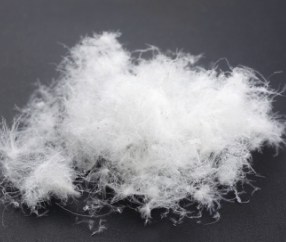
This is our in-depth answer to “how long do sleeping bags last?”
At the end of a long day of hiking, crawling into the warm cocoon of a sleeping bag sounds irresistible.
Now, a top-grade sleeping bag doesn’t come cheap and is a considerable investment. Naturally, one common question hikers have is- how long will my sleeping bag last?
How long a sleeping bag lasts depends on the overall quality of the bag, the insulation type, frequency of use, and how you take care of it. When properly cared for, a good quality sleeping bag can easily last for decades. In fact, I have seen sleeping bags easily lasting for 15 to 20 years.
So what’s the secret to making your sleeping bag last longer?
We will tell you all about it in this article.
- How Sleeping Bag Insulation Type Impacts Life Expectancy – How Long Do Sleeping Bags Last?
- How Sleeping Bags Lose Warmth Over Time – How Long Do Sleeping Bags Last?
- Do Sleeping Bags Expire? – How Long Do Sleeping Bags Last?
- How To Make Your Sleeping Bag Last Longer – How Long Do Sleeping Bags Last?
- Conclusion – How Long Do Sleeping Bags Last?
- Frequently Asked Questions – How Long Do Sleeping Bags Last?
- How Long Should my Sleeping Bag Last? – FAQs
- What Factors Can Have an Impact on the Lifespan of a Sleeping Bag? – FAQS
- Is it Necessary to Wash My Sleeping Bag After Each Use? – FAQs
- Is it Possible to Store My Sleeping Bag Compressed in a Stuff Sack? – FAQs
- What is the Best Way to Clean My Sleeping Bag? – FAQs
- Can I Repair Minor Tears or Holes in My Sleeping Bag on My Own? – FAQs
- When Should I Replace My Old Sleeping Bag? – FAQs
How Sleeping Bag Insulation Type Impacts Life Expectancy – How Long Do Sleeping Bags Last?
We all know that the two main types of insulation for sleeping bags are down and synthetic. And when it comes to warmth to weight ratio, down is the clear winner.
Bottom Line: when you’re looking for the best blend of low weight, excellent warmth, and top-notch durability, down sleeping bags are the best choice. With the right maintenance, you can easily expect more than a decade of use from a down sleeping bag.
Quite often, synthetic sleeping bags come with an irresistible price tag. If you’re only looking at car-camping trips, their higher weight and size shouldn’t be a problem. Also, synthetic fibers work well when you aren’t heading for sub-zero conditions or heading in wet conditions.
However, don’t expect them to last longer than 6 to 7 years. With heavy use, they may last only around 3 to 4 years.
Down vs Synthetic – How Sleeping Bag Insulation Type Impacts Life Expectancy

The down vs synthetic debate is one of the oldest in the camping and hiking world.
Without a doubt, down is one of the finest natural insulators you will find. The ultra-fine fibers create a 3D structure that can trap air and provide excellent warmth.
But as we all know, down sleeping bags come with a higher price tag. That makes synthetic sleeping bags an affordable option for outdoor lovers.
Note, modern sleeping bags can be made from duck down or goose down. The high fill power of goose down makes it a more expensive choice.
So what is fill power?
The fill power measures the loft and insulating efficiency of the down fibers and is expressed in numbers. The higher the number, the better the insulation. For example, 800-fill down will provide more warmth than 600-fill down.
If you don’t know this already, down isn’t the best choice for wet conditions. Down sleeping bags tend to lose all their warmth when wet and also take a long time to dry up. That way, synthetic fibers are a better choice.
That said, some brands have developed hydrophobic down that offer good insulation even in wet conditions.
Still, the outer shells of these bags aren’t completely waterproof. Most down bags come with inner compartments or baffles that aren’t waterproof. Water can seep in through the seams connecting these baffles.
Another advantage of down sleeping bags is they are highly compressible. So packing it down to a light and compact shape is easier.
Synthetic bags can be compressed too. But with long-term use, the insulating fabrics will start deteriorating. The fibers will start breaking up and lose the loft.
Basically, synthetic fibers come in two forms- continuous or short type.
The continuous filament is made from long fibers that offer more warmth and are also more durable. But they are heavier and not easily compressed.
On the other hand, short fibers mimic the structure of the down. They are lighter and more easily compressed. However, they don’t last long.
Down/Synthetic Blends – How Sleeping Bag Insulation Type Impacts Life Expectancy
If you want to get the best of both worlds, down/synthetic blends sound like a great option. Sleeping bags with 70% down and 30% synthetic fibers offer the warmth and durability of down while keeping the price low.
In most cases, the down is treated to make it water-repellent. When blended with synthetic fibers, the bag retains its insulating properties even when wet.
Obviously, the life expectancy of these sleeping bags is somewhere between down and synthetic bags.
How Sleeping Bags Lose Warmth Over Time – How Long Do Sleeping Bags Last?
Yes, they do. Even a top-grade sleeping bag can lose some warmth after a few years of use.
Why? – How Sleeping Bags Lose Warmth Over Time
With use and compression, natural fibers like down lose their fluffiness and become more compact. As a result, the fibers are able to trap less amount of air. This is true for synthetic fibers too.
The same thing can happen when pure down fibers get wet. The wet fibers will lose their fill power and may form clumps. That brings the insulating power of down close to zero.
Why don’t the birds with down feathers get wet, you may ask?
Well, waterfowl have a special gland called the preen gland, located near their tail. The birds rub the oil secreted from the gland all over their outer feathers to make them waterproof.
Thankfully, you can restore the warmth rating of the fibers in a few simple steps. Here are some steps you can take.
- Don’t store your bag in tight spaces for long periods. Both down and synthetic fibers have a limit to their resilience and can lose shape with prolonged compression. Using a roomier sack will help the fibers to breathe and remain fluffy.
- Next, you can give the sleeping bag a wash and then dry it to restore the fibers back in shape. Always follow the manufacturer’s instructions while washing. Make sure that you don’t heat synthetic fibers while using the dryer.
- If the down fabric gets wet, break down the clumps as much as possible. The best way is to let it dry under the sun in a windy area. Alternatively, use a dry indoor space with a fan or humidifier for drying. If you don’t dry a down sleeping bag properly, it may ruin the product permanently.
The other way of preventing warmth loss is to take good care of your bag. We will discuss that in detail.
In case these steps don’t work, you probably need a new sleeping bag.
Do Sleeping Bags Expire? – How Long Do Sleeping Bags Last?
Even though sleeping bags don’t come with an expiry date, they won’t last forever. However, there’s no proven method that can estimate the approximate age of your sleeping bag.
Since down fibers are made of protein, they will break down with time. In fact, high-quality down fibers can break down faster. So an 800-fill-down sleeping bag will not have the same insulating power after some years of use.
That said, a high-quality sleeping bag can last long enough to provide the right bang for your buck.
How To Make Your Sleeping Bag Last Longer – How Long Do Sleeping Bags Last?
Here are some important steps you can take to make your sleeping bag last longer.
- The first step is to change into clean clothes and wash your hands and face before getting inside your sleeping bag. This way, the body oils, sweat, and dirt won’t affect the performance of the fabric in the long run.
- Consider using a sleeping bag liner made from a soft material that can act as a barrier between your skin and the bag material. This will keep the bag clean and also add to the overall warmth factor. Check out this article to learn more about the effectiveness of sleeping bag liners.
- Treat your bag gently and protect it from rough surfaces. Protect it from sparks while sitting around a campfire. Many bags come with a water-resistant outer fabric that’s also air-tight. Putting sudden pressure on the puffed-up material may cause a seam to pop.
- In case there are any holes, use adhesive patches to repair them at the earliest. While on a trip, you can use duct tape or a bandage from the first-aid kit to block the hole. However, it’s best to choose a professional service for repairing more serious damages.
- If you see fibers sticking out of the bag, don’t pull them out. Try to push them in as much as possible.
- In many cases, rough use of the zippers results in a fabric tear in the bag. Practice using the zippers so that you can use them without a problem in a dark tent.
- It is necessary to air out the bag daily to dry out any moisture. The best way is to turn it inside out and leave it under the sign. Even so, don’t expose the fabric to the sun for too long. With prolonged exposure, UV rays can degrade the fabric.
- When the bag is losing its loft and is dirty, it’s time to give it a full wash. Otherwise, you can use some mild detergent and a brush to spot-clean the areas covered with grime. Don’t dry clean a sleeping bag or use a fabric softener. Remember, cleaning a sleeping bag in a top-loading machine with an agitator can also damage the bag.
- Before every trip, check the bag to ensure that the zippers, seams, and drawcords are in good condition. Also, make sure that the insulation is evenly distributed.

Conclusion – How Long Do Sleeping Bags Last?
All in all, the life expectancy of a sleeping bag depends on the build quality. Quite simply, you get what you pay for.
To be honest, none of us like to spend on a sleeping bag at frequent intervals.
So make sure that you care for your sleeping bag in the right manner. That way, you can extend the life of a bag by quite a few years.
Frequently Asked Questions – How Long Do Sleeping Bags Last?
How Long Should my Sleeping Bag Last? – FAQs
A sleeping bag’s lifespan varies depending on its quality and frequency of use, but most well-maintained sleeping bags can last 5-10 years or more.
What Factors Can Have an Impact on the Lifespan of a Sleeping Bag? – FAQS
The frequency of use, storage conditions, and type of insulation used in the sleeping bag can all have an impact on its lifespan.
Is it Necessary to Wash My Sleeping Bag After Each Use? – FAQs
No, washing your sleeping bag too often will cause it to wear out faster. It is recommended that you only wash your sleeping bag when it becomes visibly dirty or begins to smell.
Is it Possible to Store My Sleeping Bag Compressed in a Stuff Sack? – FAQs
While storing your sleeping bag compressed in a stuff sack may be convenient, doing so for extended periods of time can damage the insulation and reduce its overall lifespan.
What is the Best Way to Clean My Sleeping Bag? – FAQs
Always clean your sleeping bag according to the manufacturer’s instructions. In general, avoid using harsh chemicals or hot water and instead use gentle detergents and lukewarm water.
Can I Repair Minor Tears or Holes in My Sleeping Bag on My Own? – FAQs
Yes, small tears or holes can frequently be repaired with a patch kit designed specifically for outdoor gear. Larger tears or significant damage, on the other hand, may necessitate professional repair services.
When Should I Replace My Old Sleeping Bag? – FAQs
If your old sleeping bag has lost its loft (fluffiness), shows signs of significant wear and tear, or no longer keeps you warm even when properly cared for, it may be time to replace it.














